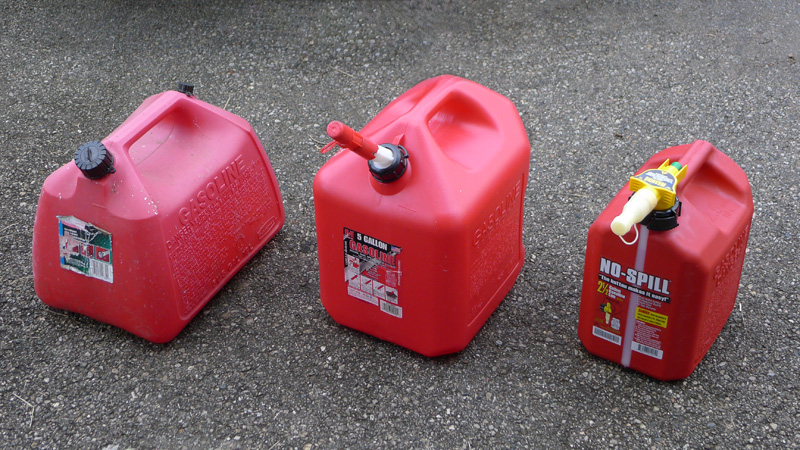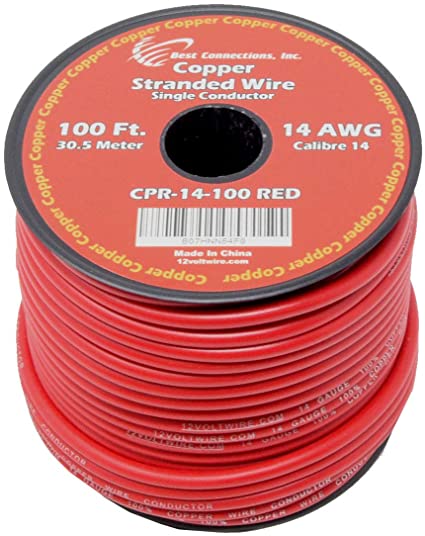20 Amp Wire Size - All You Need To Know
What size wire for 20 amps?
The best wire to use for 20 amp is the No. 12 AWG wire. This wire will safely carry 20 amps up to 100 feet. If you plan on going over 100 feet, or if you want to run the wire in conduit, you should upgrade to 10 gauge copper wire.
This 100 feet 12 AWG wire from amazon is able to handle 600 volts. Any product you plan on buying should have the features listed below.
- Flame Retardancy
- Moisture Resistance
- Corrosion Resistant
Flame retardancy is a critical requirement for any electrical product. This is especially true for products that are placed outdoors where they may come into contact with fire. In order to meet this requirement, the jacket should have a high level of flame retardancy.
Moisture can cause many problems for electrical equipment. If water gets inside the insulation, it can short out the circuit and cause damage to the device. To prevent this from happening, the jacket should be able to resist moisture penetration.
Corrosion is the result of chemical reactions between two materials. When these chemicals react together, they form a solid material that is attached to the surface of the metal. This can lead to the destruction of the wire and ultimately the entire system. To prevent this from occurring, the jacket should be made of materials that are not susceptible to corrosion.
A certified electrician is necessary for handling these types of amperages and wiring.
What is the ampacity?
The ampacity of a conductor is defined as how much current can safely be carried by it without overheating. The maximum current that can flow through a circuit element or conductor must not exceed its ampacity. For example, if a piece of 12 AWG copper has an ampacity of 20 amps, this means that we cannot send more than 20 amps through it without overheating and melting down the wiring. If we force more than 20 amps through this wire (for example, 50 amps), then it will result in overheating and eventually cause fire or electric shock.
Be sure to find out the correct wire you need for any job you plan on completing.20 amp breaker wire size
A 20 amp breaker requires a wire size of 12 AWG. This is the smallest wire size you should use for a 20 amp circuit breaker since an AWG gauge of 12 represents 20 amps. If you plan on installing a 20 amp receptacle in your home, then remember that this requires a special 20 amp outlet box, which has to have an opening sufficient enough for the large cable that would lead from the breaker panel to the receptacle.
Do not mix wires!
NEVER use 14-gauge or 16-gauge wire for 20 amp breakers when sized with a No. 12 AWG wire. If you run out of No. 12 AWG wire, go and purchase some more and do not try to use any leftover wires from any other projects you might have completed earlier.
-
20 amp t blade Extension Cord 10/3 Triple Outlet NEMA 5-20 amp extension
-
Yellow Jacket 2992 10/3 Extra Heavy-Duty 20-Amp Premium SJTW Contractor Extension Cord
An extension cord that comes in at a very low cost and will definitely do the job. Pick one of these up over at amazon.
This 20 amp extension cord will be sure to handle all those 20 amp job requirements you might throw at it. Jump over to amazon to pick some up.
What is AWG or "gauge"?
AWG is the American Wire Gauge or the system of standard wire sizes in use in the USA. The smaller the number, the larger the diameter of the wire. Sometimes called "the American Standard" to avoid confusion with British Standard wire gauge (SWG) used outside North America.
How Many Outlets Can Be Placed on a 20 Amp Circuit (Household)?
A 20 amp circuit can easily handle almost any amount of outlets you place on it as long as you do not try to draw more than 80% of the said 20 amps. This means that you should be safe using as many outlets as possible as long as you don't go over 16 amps. The extra 4 amps that is left over is used for safety. Some devices have surges and this extra 4 amps is used to handle those surges.
How can I tell how much capacity is needed?
This is generally determined by how many watts are used on each circuit. The larger the appliance, the higher the wattage which means more electricity and thus a higher amp rating will be required.
What is a breaker?
A breaker's purpose is to interrupt the flow of electricity in case of unwanted overloads. Breakers are used to prevent fires and shocks that can be caused by overloading a circuit.
A 20 amp breaker will have 2 pins, one is usually blue and the other white or black if it is older than 15 years old. Breakers are great since they are a second safety precaution that will allow you to have a peace of mind.
If you're in the market for a 20 amp breaker, this one has many great reviews from amazon.
What are some signs of overload?
- You will notice that there is an overload if you have equipment plugged into a circuit and the breaker clicks off. Your lights will stay off because the current is too high for the breaker to switch on.
- When you push reset or flip the switch off and back on again it stays off because it senses that there is an overload.
- If your switches or outlets start to buzz or vibrate especially when you turn the power on and off quickly.
- If your breakers keep tripping it might mean that an overload is present. If too much current flows through the switch contacts on the breaker or panel it can begin to overheat. This will force the breaker to trip and reset itself preventing damage to your home's wiring.
- Any bad smelling burn odor coming form switches or outlets indicates the possibility of an overload which can turn into an electrical fire.
- Any scorches noticed on outlets or plugs. These are signs that the wires are overheating.
- Appliances or power tools lack efficient power output
- Instrument like lamps, TV or air conditioners smell hot while on. This probably means that the wire is too small to carry all the power needed by your appliances and devices. If you use larger wire it will help prevent overheating and tripping of circuit breakers.
- If your lights start to dim or flicker while using a small wire, this is another sign that the current is too much to be carried by such wires.
Table of some appliances and their amperage
| Electrical Appliance | Required Amperage |
|---|---|
| Electrical Furnace | 30 Amps |
| Electric Stove | 40 - 50 Amps |
| Hot Tub | 30 - 50 Amps |
| Range Circuit | 50 Amps |
| Refrigerator | 20 Amps |
| Garbage Disposal Circuit | 15 Amps |
| Microwave Oven | 20 Amps |
| Dishwasher | 15 Amps |
Conclusion
You just learned about which wire gauge to use for a 20 amp circuit. It is important that you install the correct size wire as well as understand the wiring system inside of your home in order to be safe and ensure convenience when using electricity.
It is recommended that you call an electrician if you have any questions about how much power your device requires as well as which type of wire should be used. Don't forget, it is very important to always turn off the main source of electricity before making any repairs or modifications to your circuits. As long as safety precautions are followed, then there will not be any problems with the electrical systems throughout your home.


